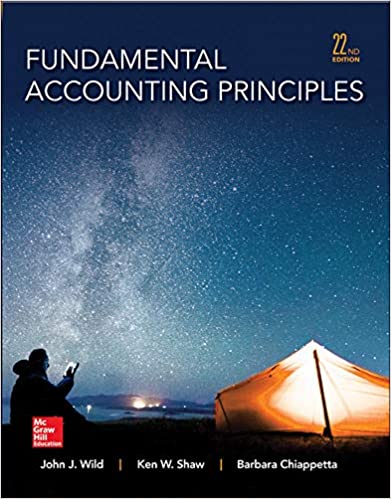
Fundamental Accounting Principles 22th Edition by John Wild ,Ken Shaw,Barbara Chiappetta
Edition 22ISBN: 978-0077862275
Fundamental Accounting Principles 22th Edition by John Wild ,Ken Shaw,Barbara Chiappetta
Edition 22ISBN: 978-0077862275 Exercise 10
Refer to Apple 's financial statements in Appendix A to answer the following.
1. What is the amount of Apple's accounts receivable as of September 28, 2013
2. Compute Apple's accounts receivable turnover as of September 28, 2013.
3. How long does it take, on average, for the company to collect receivables
4. Apple's most liquid assets include ( a ) cash and cash equivalents, ( b ) short-term marketable securities, ( c ) receivables, and ( d ) inventory. Compute the percentage that these liquid assets make up of current liabilities as of September 28, 2013. Do the same computations for September 29, 2012. Comment on the company's ability to satisfy its current liabilities as of its fiscal 2013 year-end compared to its fiscal 2012 year-end.
5. What criteria did Apple use to classify items as cash equivalents ( Hint: Refer to Apple's footnotes describing cash equivalents in Appendix A.)
Fast Forward
6. Access Apple's financial statements for fiscal years after September 28, 2013, at its website ( www.Apple.com ) or the SEC's EDGAR database ( www.SEC.gov ). Recompute parts 2 and 4 and comment on any changes since September 28, 2013.
Reference : Apple 's financial statements in Appendix A




1. What is the amount of Apple's accounts receivable as of September 28, 2013
2. Compute Apple's accounts receivable turnover as of September 28, 2013.
3. How long does it take, on average, for the company to collect receivables
4. Apple's most liquid assets include ( a ) cash and cash equivalents, ( b ) short-term marketable securities, ( c ) receivables, and ( d ) inventory. Compute the percentage that these liquid assets make up of current liabilities as of September 28, 2013. Do the same computations for September 29, 2012. Comment on the company's ability to satisfy its current liabilities as of its fiscal 2013 year-end compared to its fiscal 2012 year-end.
5. What criteria did Apple use to classify items as cash equivalents ( Hint: Refer to Apple's footnotes describing cash equivalents in Appendix A.)
Fast Forward
6. Access Apple's financial statements for fiscal years after September 28, 2013, at its website ( www.Apple.com ) or the SEC's EDGAR database ( www.SEC.gov ). Recompute parts 2 and 4 and comment on any changes since September 28, 2013.
Reference : Apple 's financial statements in Appendix A




Explanation
Reporting in Action
1.
Account receivab...
Fundamental Accounting Principles 22th Edition by John Wild ,Ken Shaw,Barbara Chiappetta
Why don’t you like this exercise?
Other Minimum 8 character and maximum 255 character
Character 255


